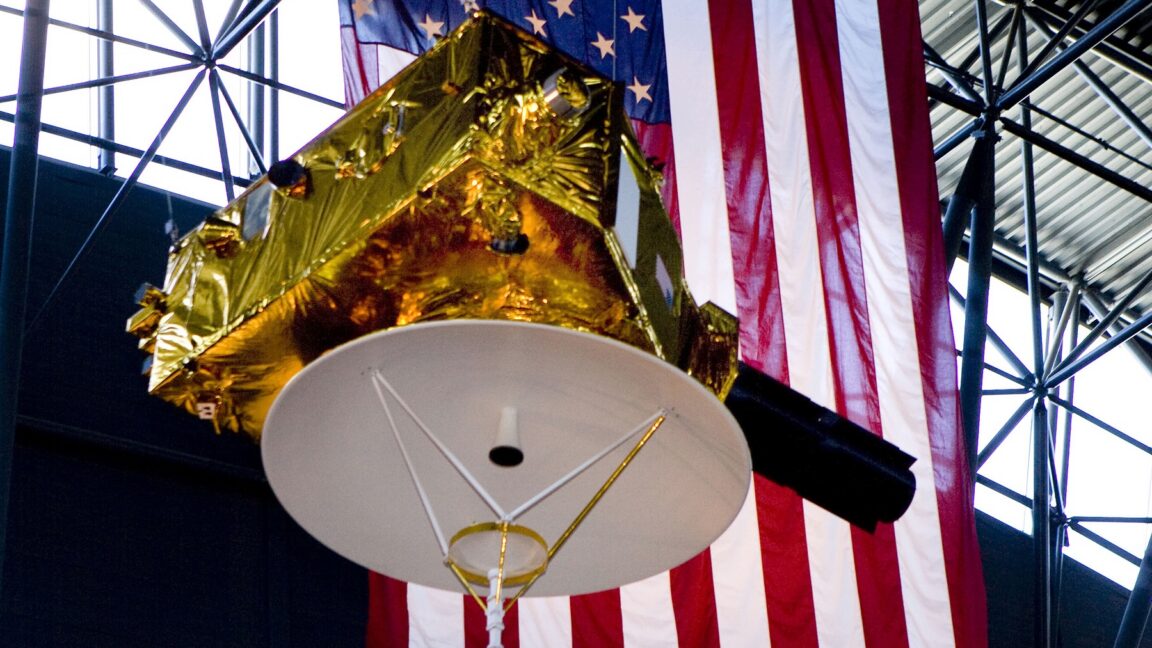Science
Congress Faces Deadline to Protect NASA’s Vital Space Missions

Federal funding for NASA is at a critical juncture, with potential cuts threatening the future of 19 active space missions. As the current budget is set to expire on September 30, 2023, Congress must act swiftly to avoid a government shutdown and secure funding for projects that are essential for understanding our climate and the broader universe.
The White House’s budget proposal for fiscal year 2026 suggests a drastic 25 percent reduction in NASA’s overall budget, alongside nearly 50 percent cuts to the agency’s Science Mission Directorate. Should these cuts be realized, they would jeopardize at least 41 missions, including 19 currently operational in space and many others in advanced stages of development.
While a president’s budget request is not definitive, lawmakers in both the House and Senate have been drafting their own budget bills, which generally reject the substantial cuts proposed by the previous administration. Despite these legislative efforts, concerns are growing among scientists and space enthusiasts alike about the future of NASA’s missions.
Potential Impacts on Key Missions
The missions facing cancellation include well-known programs such as the Orbiting Carbon Observatory and the Chandra X-ray Observatory, in addition to the two active satellites currently orbiting Mars. Notably, the New Horizons spacecraft, which made headlines in 2015 for its historic flyby of Pluto, is also under threat.
Alan Stern, the principal investigator for New Horizons at the Southwest Research Institute, emphasized the spacecraft’s continued health and capabilities. “New Horizons is perfectly healthy,” he stated, noting that it has sufficient power and fuel to operate into the late 2040s or even 2050. Since its launch, New Horizons has traveled over 2.5 billion miles (approximately 4.1 billion kilometers) beyond Pluto, and it could soon become the third spacecraft to return data from interstellar space.
With a development cost of $780 million and a recent operational budget of $9.7 million for 2024, Stern warned that the proposed cuts would hinder the collection of unique scientific data that no other missions could replicate.
Concerns from the Scientific Community
The implications of these budget cuts extend far beyond financial considerations. Stern described the potential shutdown of these missions as a “tragic capitulation” of U.S. leadership in space science. “We’re pretty undeniably the frontrunner in space sciences,” he remarked, adding that scaling back missions could position the U.S. behind nations like China and various European countries.
Meanwhile, NASA’s Juno spacecraft, which has been orbiting Jupiter since 2016, is also facing uncertainty. Lead scientist Scott Bolton reported that Juno continues to collect vital information about Jupiter’s atmosphere and magnetic field, despite some challenges related to radiation damage to its camera. Bolton believes this experience could provide valuable lessons for future missions, including the recently launched Europa Clipper, which is scheduled to arrive at Jupiter in 2030.
Juno’s operating costs for 2024 amount to $28.4 million, a fraction of NASA’s overall budget for the project, which totals more than $1.13 billion. Bolton expressed hope that the science gathered from Juno could continue, contingent on Congress’s budgetary decisions.
As the clock ticks down to the September 30 deadline, NASA has requested outlines from mission leaders like Stern and Bolton on the costs and implications of shutting down their projects. Stern underscored the irreversible nature of termination, stating, “Turning off those spacecraft’s radio receivers means there’s no way to turn them back on.”
In summary, the fate of America’s space exploration initiatives hangs in the balance as Congress prepares to make crucial budgetary decisions. The outcome will not only influence the future of NASA’s missions but also shape the U.S. position in the global landscape of space science.
-

 Science3 months ago
Science3 months agoToyoake City Proposes Daily Two-Hour Smartphone Use Limit
-

 Top Stories3 months ago
Top Stories3 months agoPedestrian Fatally Injured in Esquimalt Collision on August 14
-

 Health3 months ago
Health3 months agoB.C. Review Reveals Urgent Need for Rare-Disease Drug Reforms
-

 Technology3 months ago
Technology3 months agoDark Adventure Game “Bye Sweet Carole” Set for October Release
-

 World3 months ago
World3 months agoJimmy Lai’s Defense Challenges Charges Under National Security Law
-

 Lifestyle3 months ago
Lifestyle3 months agoVictoria’s Pop-Up Shop Shines Light on B.C.’s Wolf Cull
-

 Technology3 months ago
Technology3 months agoKonami Revives Iconic Metal Gear Solid Delta Ahead of Release
-

 Technology3 months ago
Technology3 months agoApple Expands Self-Service Repair Program to Canada
-

 Technology3 months ago
Technology3 months agoSnapmaker U1 Color 3D Printer Redefines Speed and Sustainability
-

 Technology3 months ago
Technology3 months agoAION Folding Knife: Redefining EDC Design with Premium Materials
-

 Business3 months ago
Business3 months agoGordon Murray Automotive Unveils S1 LM and Le Mans GTR at Monterey
-

 Technology3 months ago
Technology3 months agoSolve Today’s Wordle Challenge: Hints and Answer for August 19









